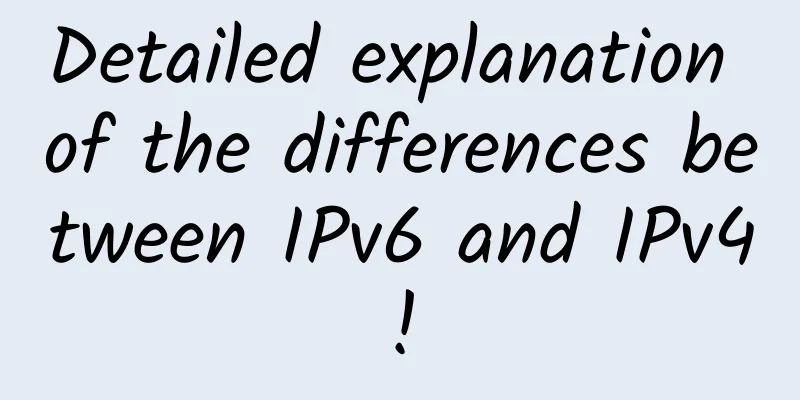Network acceleration, who will revolutionize the future?

|
The Sanskrit "Sangha Vinaya" records that a day and night is 4.8 million instants, one instant is one thought, and one thought is 0.018 seconds. One thought has given birth to countless amazing changes. Human development and technological innovation are all driven by every great thought. The information revolution has brought about the rapid development of the Internet, which has gradually upgraded the amplification effect of every thought, and our demand for experience has gradually become an obsession with speed. The rapid development of Internet technology has made the digital field the choice of more companies. Video, social networking, graphics and text and other pan-entertainment applications and game entertainment products have always been the mainstream services pursued by users and have also become the outlet favored by capital. Online, young and content-based have also become the common points of many tracks. In the continuous expansion of global business, the global network acceleration has become a powerful carrier behind it. Following the Internet's pursuit of speed, with the birth of the Internet, engineers have never stopped pursuing network quality. From the perspective of accelerated globalization, let us look at the connection between supply and demand. 1. Latency + quality: the best of both worlds for network accelerationTime = distance / speed. This simple formula allows us to perceive speed from a more intuitive perspective. For example, the straight-line distance between China and the west coast of the United States across the Pacific Ocean is about 15,000 km. According to the speed of light in optical fiber of 200,000 km/s, it takes about 75 ms for a signal to be sent from China to the United States, and about 150 ms for a round trip. (Figure below: Global submarine optical cables from 1989 to the present) However, the delay mentioned above is only the delay caused by the network layer completing a two-way communication (called RTT, Round-Trip Time). In order to complete data transmission, each layer of the network protocol may perform several two-way communications, which will cause the application layer delay to be several times the RTT. Taking an HTTPS request as an example, let's see how RTT will be amplified: DNS resolution consumes 1RTT, TCP handshake consumes 1RTT, TLS handshake consumes 2RTT, and HTTP request consumes 1RTT. A common HTTPS request takes 5 RTT. If calculated based on the RTT between China and the United States, the time to complete an HTTPS request will reach 1500ms. Such a delay is enough to distract users from the current context. This is just an ideal physical calculation. We have not yet calculated the delay caused by a large number of routing and switching device nodes in network transmission. It also takes time for data to be routed or exchanged in these devices. Generally, network devices will cause a delay of tens to hundreds of milliseconds in data exchange. Due to the original mechanism of the Internet, cross-border business does not have end-to-end QoS guarantee, and we have not yet added the difficulty brought by QoS guarantee. If the device throughput is insufficient, queuing is also a common situation. If a network attack occurs, it will be a more complicated security issue. Speed and quality have become the two sides of the coin for network acceleration solutions, and we look forward to more changes. In a simple transoceanic connection case, without any acceleration processing, it is difficult to meet our current experience requirements by relying on the existing infrastructure. In the struggle between engineers and network acceleration, speed and quality have become the rigid needs of security, and have also spawned bottom-up technological innovation. 2. Bottom-up technological innovationSince the birth of CDN in the late 1990s, network acceleration has entered a real fast lane. We have also seen a bottom-up technological evolution picture unfolding, from the shortening of spatial distances brought by CDN to the acceleration of physical links brought by dedicated lines, and then to the optimization of network protocols above. Shorten the distance, CDN changes everything CDN technology is the most direct "transformation" of physical facilities, which achieves high-speed connection by shortening the logical physical distance. CDN deploys servers in different regions and different operators, and cooperates with global load technology to enable users to obtain data from the nearest server, avoiding delays caused by geographical, operator, network congestion and other issues, and providing a smooth user experience. With the evolution of HTTP, CDN technology has gradually innovated and witnessed many waves of the Internet. From the stagnation caused by the bursting of the Internet bubble in the early stage of development, to the wave of e-commerce and portal development, to the rapid development of the industry brought about by OTT social, game, audio and video applications, CDN has become an indispensable and important part of the Internet infrastructure. In addition to reducing latency, CDN can also ease core network congestion, achieve off-site disaster recovery, and distribute traffic more flexibly. CDN has gradually covered multiple technical segments such as media delivery, web performance optimization, DRM and code conversion, monitoring and analysis, transparent caching, data security, and cloud storage solutions. However, the advantage of CDN technology lies in the acceleration of static content, but it has become a weakness for dynamic content with strong real-time requirements. CDN suppliers are also constantly making up for their shortcomings by adding intelligent routing. Reduce congestion and optimize dedicated line technology Private line technology is a solution for the physical link layer. In order to reduce the delay caused by complex links, routing and switching nodes in the connection, private lines have become the choice of most overseas companies. However, cost is the biggest problem for users to choose private lines. From simple point-to-point transmission private lines, to MPLS that can access any point in the entire network, to SD-WAN with more flexible and accurate link selection, while continuously reducing delays and improving efficiency, it also brings further significant reductions in costs to customers. MPLS uses labels for classified forwarding, classifying packets with the same forwarding processing mode into one category, and performing different forwarding processing for different categories, so that the dedicated line has completed the transformation from "line" to "network". SD-WAN gives dedicated lines more choices, and through efficient software, it can flexibly select IPsec, MPLS, and mobile networks according to the connection requirements of applications. The collaboration and linkage of multi-dimensional enterprises such as equipment manufacturers, public clouds, telecom operators, and line operators also allows the evolved private line technology to provide services in a more flexible manner, and provide users with a better experience with limited resources through differentiated user experience responses. The multi-dimensional linkage of enterprises also brings more complexity and difficulties to the solution. Protocol upgrade and simplification to reduce RTT consumption The changes in network protocols are to optimize acceleration through software thinking. The scale of the TCP/IP protocol cluster continues to grow with the gradual optimization of network protocols. While the multi-layer communication round trips ensure the communication quality, they also further increase the consumption of RTT times. The independent development of upper-layer applications and underlying networks has led to different solutions to the same problem, and the transport layer has become the boundary of interaction between the two parties. The silent efforts and dedication of the underlying network perspective have brought about a smooth surface IP connection, and the upper-layer application perspective is also evolving through continuous optimization. Ultimately, simplification has gradually become a consensus among everyone, complex protocols are constantly being reduced, and new simplified protocols are also being further generated. From the application perspective, the ultimate QUIC (Quick UDP Internet Connections) protocol was born, which is highly anticipated. Originated from Google, QUIC is based on UDP transmission. The initial handshake combines the typical three-way handshake of TCP and the TLS 1.3 handshake, providing endpoint authentication and negotiation of cryptographic parameters. This means that QUIC has an advantage of several hundred milliseconds when sending the first data packet, plus the advantages of improved congestion control algorithm, support for multiplexing, reduced head-of-line blocking, connection migration, etc., which will bring a qualitative leap in the Internet user experience. Although the exploration of network acceleration technology over the past 20 years has brought about phased innovations, the independent acceleration solutions have also brought their own problems.
The bottom-up technological evolution really needs further integration and mutual complementation. 3. Global Acceleration (GA), the combination of cloud and accelerationFor the acceleration solutions that are independent of each other, the cloud seems to be a better glue. Public cloud vendors that have taken off with cloud computing technology have set off a wave of innovation in Global Accelerator (GA). GA technology, led by public cloud, improves the user's traffic performance through global network infrastructure. Relying on the high-quality lines of the public cloud and the global transmission network, it can achieve access to the cloud in any region of the world, and can also achieve global cross-regional deployment. We have also seen that various resource vendors in the industry have jointly launched their own understanding of GA technology, and CDN has also been supported by IPA (IP Application Accelerator) technology. The GA technology advocated by public cloud vendors allocates static IPs to access users. Client traffic enters the public cloud acceleration network from the nearest access point through the acceleration IP. Users can use the high-speed links built or rented by the public cloud to quickly reach the traffic. In addition, the intelligent path selection and traffic scheduling of global acceleration can ensure that traffic with different priorities and scheduling strategies reaches the best terminal node through the optimal path. (Figure below: AWS real-time communication GA acceleration case) Compared with the high cost and limitations of dedicated lines or CDNs, GA has achieved a qualitative improvement in link intelligent acceleration. Combined with the routing optimization of technologies such as SD-WAN, it can achieve higher cost-effectiveness for cross-border links. Public cloud vendors have taken acceleration to the extreme through their own infrastructure resources, and provide matching strategies for applications with different demands. Behind this is also the bottom-up technology integration, which integrates and innovates CDN, dedicated lines, protocol optimization and other directions through the cloud. However, the user experience brought by GA technology still faces challenges. 1) Single cloud coverage is limited, and multi-cloud issues are complex and changeable Due to cost considerations, the overseas coverage of public clouds is often concentrated in developed countries and regions. Overseas operators also have the same problem of network coverage, which is out of reach for remote countries and regions. The coverage capabilities of a single public cloud are even more limited, and enterprises often choose the "multi-cloud + self-built/rented computer room" approach, which further increases the complexity of the network. 2) Lack of QoS guarantee on the end side, making it difficult to guarantee the last mile GA locates clients by allocating static IP addresses. The acceleration of targeted applications relies on application identification at each node to achieve passive acceleration. Applications cannot actively select routes for acceleration on the client side. The GA model requires access to the computer room to achieve acceleration optimization, which stops end-to-end optimization at the last mile. 4. Where to go in the futureFrom the perspective of accelerated globalization, we see common problems in the development of technology:
We have seen that the technology behind it continues to develop. CDN technology has developed to the 3.0 stage. SD-WAN is also further upgrading and optimizing dedicated line technology. Protocol simplification has also added SRv6. The cloud behind GA is also constantly optimizing its connection details. Network acceleration technology will continue to evolve and innovate. Looking ahead, the digital trend brought about by the globalization of business will bring about more scenarios such as audio and video, games, and education. The first two issues require more cooperation and discussion among industry enterprises to bring more coverage and wider scheduling. The third issue requires getting closer to users, such as through SDK-level end-to-end optimization, to move the right of choice from the computer room to the user, so that the application can actively choose the optimal path on the client. Of course, we will have to face a more severe network environment and more complex network security issues in the future, which will require more communication and collaboration between different types of enterprises in the field to optimize and accelerate every detail. Every amazing change that changes the world often happens in seemingly insignificant moments, and each moment converges into a long river of life. Only by being fast and cutting off waste and waiting can we return the seconds that gather sand into a tower to users. Only by being stable and ensuring the quality of transmission can we make creation last forever. We also look forward to more climbers of speed and quality emerging in the industry. |
<<: KubeDL joins CNCF Sandbox to accelerate the cloud nativeization of AI industry
Recommend
What process resources are shared between threads?
[[357394]] Processes and threads are two topics t...
A 10,000-word article interprets the operators' fight for 5G: a battle of three kingdoms in financial strength
For a long time, the development of high-tech com...
Huawei Cloud Online Education Innovation Season is launched, 365 innovation upgrade package fully empowers education upgrade in the 5G era
[51CTO.com original article] Recently, Internet e...
MWC19 Shanghai | Ruijie Networks invites you to gather together to see the cutting-edge and talk about the future
[[268236]] June 26-28 Asia's technology indus...
5G: What it means and why we'll never need 6G
The launch of 5G isn’t all that far away, with ro...
LinkRunner G2 is a favorite of operators and maintenance personnel! See how NETSCOUT creates the "measurement" in the network testing industry
[51CTO.com original article] In recent years, I h...
There are many "roadblocks" blocking the way for the full popularization of 5G. When will it be possible?
Now everyone is talking about 5G, just like when ...
iPerf3 Tutorial: The Ultimate Tool for Easily Evaluating Network Performance
1. Introduction to iPerf3 iPerf3 is a widely used...
Using tunneling protocol to achieve transparent communication between different dubbo clusters
[[375332]] Preface The author has recently comple...
In the future, AI can be used for 5G network analysis
There are many blogs and vendor papers about 5G r...
Why the development of optical communications is not as good as 5G, experts say: each is fighting for its own
At the 2021 China Optical Network Conference whic...
Synopsys: Reducing 5G attack surface and making good use of technology "double-edged sword"
New technologies are often a double-edged sword, ...
The role of LoRaWAN and IoT in optimizing asset management
The role of the Internet of Things (IoT) and LoRa...
Comparison and conversion between IF sampling and IQ sampling
RF receiving systems usually use digital signal p...
It’s too early! The conditions for shutting down 2G networks may not be met until 2019
On April 5, while China was going crazy for the &...









